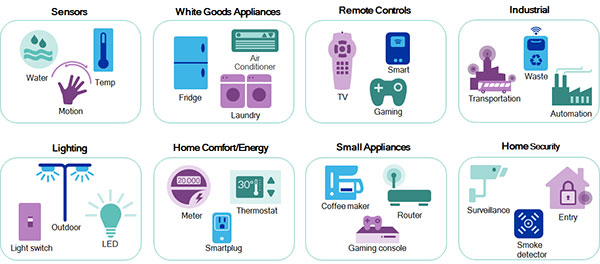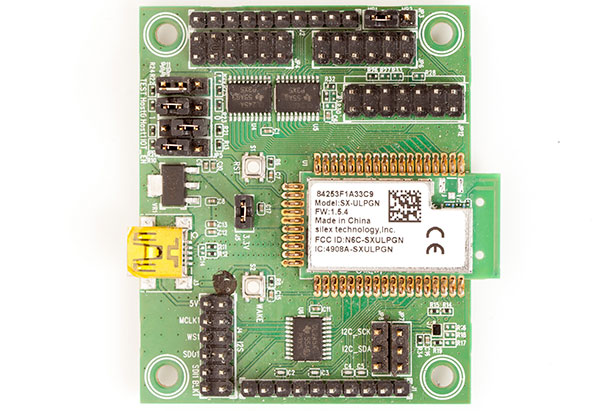Snapdragon and Qualcomm branded products are products of
Qualcomm Technologies, Inc. and/or its subsidiaries.
You’ve built out your embedded Internet of Things (IoT) SW application and you need a Wi-Fi platform to run it on, with low power consumption and a rich set of communication protocols and physical interfaces.
Time to look at the QCA4010 Wi-Fi module from Qualcomm® Technologies, Inc. (QTI). It’s available now in an evaluation kit for professional embedded developers and system engineers.
Low-power Wi-Fi Use Cases
QCA4010 is designed for IoT applications that require low-power Wi-Fi with an integrated micro-control unit (MCU) in a single package, large application memory (800KB) and multiple I/O options. You can connect sensors and actuators to the hostless system-on-chip and start working on a variety of use cases:
- Home automation – Connect QCA4010 to the cloud to retrieve weather forecasts. Depending on imminent conditions, you can raise/lower window shades, set temperature in the HVAC system and adjust irrigation.
- Lighting – Attach a light sensor to monitor and adjust the intensity and color of light in a room. LIFX uses QCA40xx series chips in its smart lighting products.
- Metering – Monitor data on consumption of water, gas and electricity, then send readings over the cloud to utilities for billing and analysis.
- Geolocation – Monitor position of users’ wrist bands and other wearables as they move among Wi-Fi networks.
- Remote control – Connect switches, motors and displays to the cloud, then control devices worldwide through a mobile app.
- Household appliances – Retrofit refrigerators, washers, dryers and other white goods for the IoT.
- Logistics – Track movement of goods and mobile devices inside a building’s Wi-Fi network.
With 802.11a/b/g/n connectivity, QCA4010 also paves the way for IoT applications in energy management, medical devices and smart cities.

Development Kit for QCA4010
QTI is working with multiple vendors on development kits that can be purchased by developers to help them build IoT applications around QCA4010. Here’s the process
- Purchase a development kit based on QCA4010. In North America, you can purchase a Silex module from Arrow Electronics.
- Use any of multiple physical interfaces to connect sensors and other peripherals to the kit (see images).
- Download and install the QCA4010 SDK.
- Download and install the Cadence Xtensa Toolchain. It includes the tools you’ll need to evaluate, design, develop, produce, support and maintain the products you build around QCA4010.
- Write and debug your applications, then iterate on the development kit.

To get your programming rolling, you’ll find plenty of documentation on QCA4010, including a device spec, release notes, a user guide and a quick start guide. We’ve also provided demos in the SDK:
- Soft AP mode
- HTTP server and HTTP client using wmiconfig commands
- Simple DNS server and DNS client
- Throughput tests
- Concurrency demo
- Hostless UART demo
Besides cloud connectivity to popular cloud providers such as Google Weave and Apple Homekit, QCA4010 also supports multiple protocols for communicating locally such as the Open Connectivity Foundation (OCF) and AllJoyn from the AllSeen Alliance.
Next Steps
Get your QCA4010 development kit today. It’s designed for a broad range of IoT design requirements: physical interfaces, Wi-Fi modes, low power options and communication protocols. Build out your prototypes on the kit now, and start shipping in no time.

Comments
Re: QCA4010 in a Development Kit: Hostless, Low-Power Wi-Fi SoC